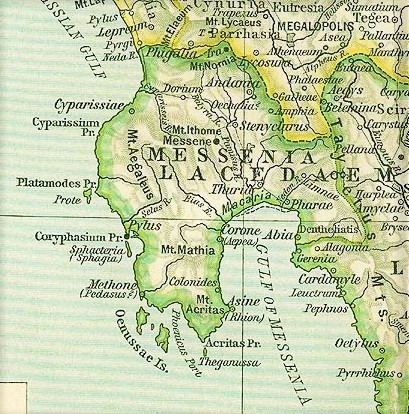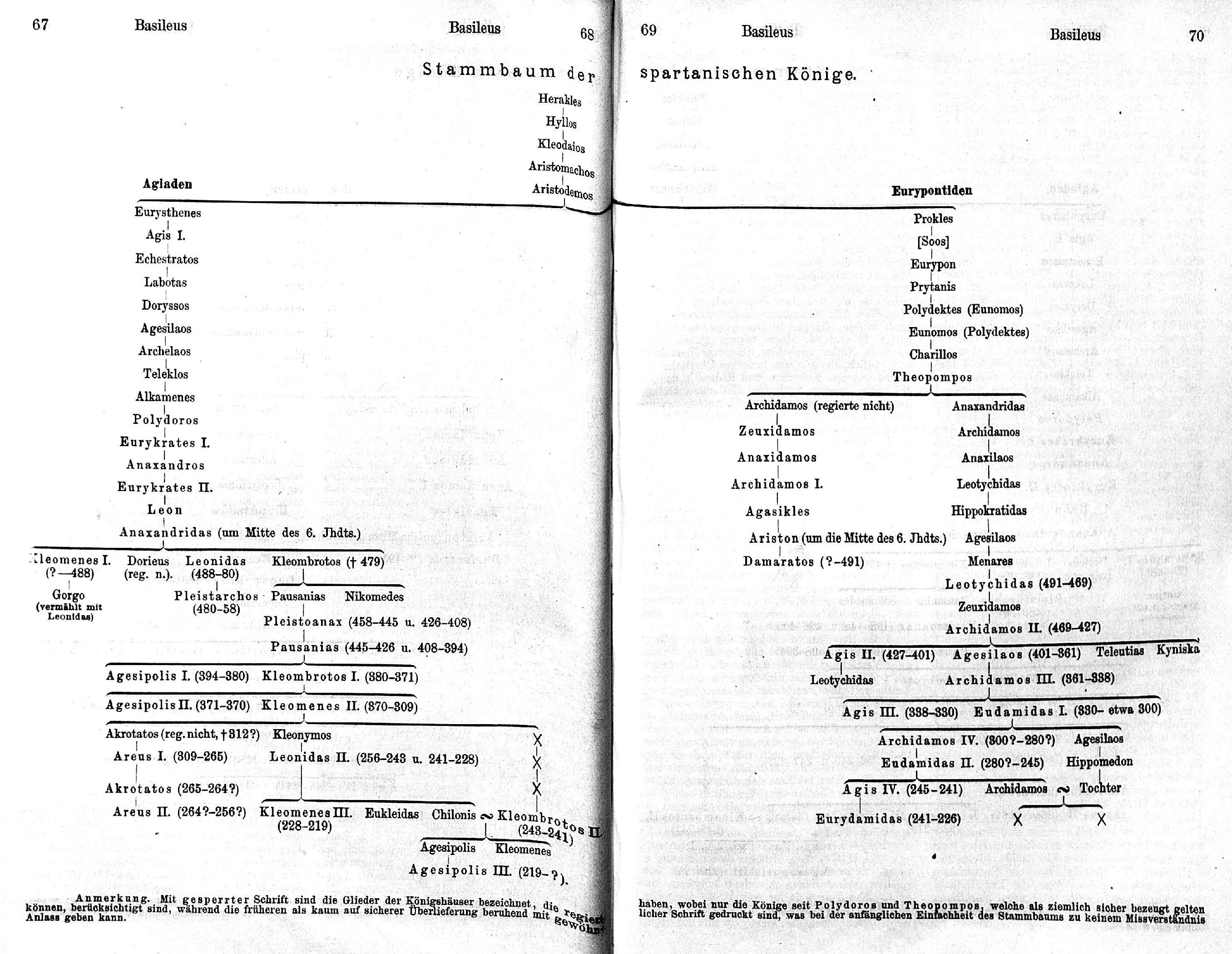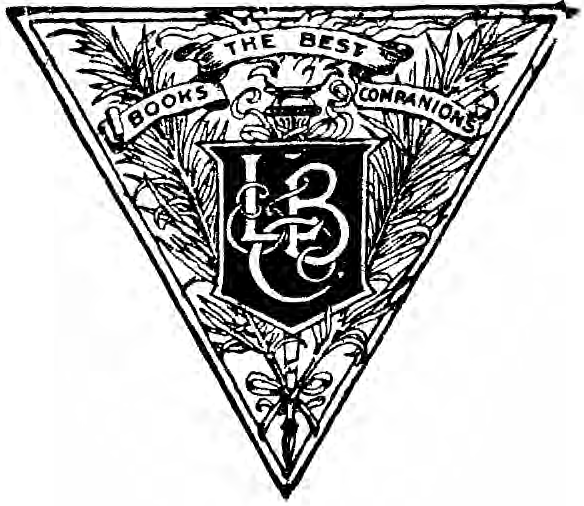|
Alcmenes
Alcmenes ( grc-gre, Ἀλκμένης) or Alcamenes, Alkamenos, was the 9th king of Sparta of the Agiad dynasty, from c. 740 to c. 700 BC. According to Pausanias, he was a commander in the night-expedition against Ampheia, which began the First Messenian War, but died before its 4th year. In his reign Helos was taken, a place near the mouth of the Eurotas, the last independent hold of the old Achaean population, and the supposed origin of the term "helot".Plutarch, ''Apophth. Lac.'' He succeeded his father Teleclus and was succeeded by his son Polydorus In Greek mythology, Polydorus (; grc, Πολύδωρος, i.e. "many-gift d) or Polydoros referred to several different people. *Polydorus, son of Phineus and Cleopatra, and brother of Polydector (Polydectus). These two sons by his first wife were .... References 8th-century BC rulers 8th-century BC Spartans Agiad kings of Sparta Messenian Wars {{europe-noble-stub ... [...More Info...] [...Related Items...] OR: [Wikipedia] [Google] [Baidu] |
First Messenian War
The First Messenian War was a war between Messenia and Sparta. It began in 743 BC and ended in 724 BC, according to the dates given by Pausanias (geographer), Pausanias. The war continued the rivalry between the Achaeans (tribe), Achaeans and the Dorians that had been initiated by the purported Return of the Heracleidae. Both sides utilized an explosive incident to settle the rivalry by full-scale war. The war was prolonged into 20 years. The result was a Spartan victory. Messenia was depopulated by emigration of the Achaeans to other states. Those who did not emigrate were reduced socially to helots, or serfs. Their descendants were held in hereditary servitude for centuries until the Spartan state finally needed them for defense. Dates Pausanias' standard dates Pausanias (geographer), Pausanias says that the opening campaign was a surprise attack on Ampheia by a Spartan force commanded by Alcmenes, List of kings of Sparta#Agiad dynasty, Agiad king of Sparta, in the second yea ... [...More Info...] [...Related Items...] OR: [Wikipedia] [Google] [Baidu] |
Agiad Kings Of Sparta
The Agiad dynasty was one of the two royal families of Sparta, a powerful city-state of Ancient Greece. The Agiads were seniors to the other royal house, the Eurypontids, with whom they had an enduring rivalry. Their hypothetical founder was Agis I, possibly the first king of Sparta at the end of the 10th century, who gave his name to the dynasty. The last Agiad king was Agesipolis III, deposed by the Eurypontid Lycurgus in 215 BC. Their most famous member was probably Leonidas I, known for his heroic death at the battle of Thermopylae in 480 BC. History In order to explain the peculiarity of the Spartan two kings, the Spartans elaborated a legend saying that Aristodemos—the first king of Sparta—had twins, Eurysthenes and Prokles. Since the Spartans did not know who was born first, they opted for a diarchy, a college of two kings with the same power; Eurysthenes being the first Agiad, Prokles the first Eurypontid.Hard, ''Routledge Handbook of Greek Mythology'', p. 291. Mo ... [...More Info...] [...Related Items...] OR: [Wikipedia] [Google] [Baidu] |
Agiad Dynasty
The Agiad dynasty was one of the two royal families of Sparta, a powerful city-state of Ancient Greece. The Agiads were seniors to the other royal house, the Eurypontids, with whom they had an enduring rivalry. Their hypothetical founder was Agis I, possibly the first king of Sparta at the end of the 10th century, who gave his name to the dynasty. The last Agiad king was Agesipolis III, deposed by the Eurypontid Lycurgus in 215 BC. Their most famous member was probably Leonidas I, known for his heroic death at the battle of Thermopylae in 480 BC. History In order to explain the peculiarity of the Spartan two kings, the Spartans elaborated a legend saying that Aristodemos—the first king of Sparta—had twins, Eurysthenes and Prokles. Since the Spartans did not know who was born first, they opted for a diarchy, a college of two kings with the same power; Eurysthenes being the first Agiad, Prokles the first Eurypontid.Hard, ''Routledge Handbook of Greek Mythology'', p. 291. M ... [...More Info...] [...Related Items...] OR: [Wikipedia] [Google] [Baidu] |
Teleclus
Teleclus or Teleklos (Greek: Τήλεκλος) was the 8th Agiad dynasty king of Sparta during the eighth century BC. He was the son of King Archelaus and grandson of King Agesilaus I. Pausanias reports that Teleclus' reign saw the conquest of Amyclae, Pharis and Geranthrae, towns of the Perioeci or "dwellers round about". Teleclus was killed during a skirmish with the Messanians during a festival at the temple of Artemis Limnatis, Pausanias 1918 Book 4, IV, 1-3. an event foreshadowing the First Messenian War. He was succeeded by his son Alcmenes Alcmenes ( grc-gre, Ἀλκμένης) or Alcamenes, Alkamenos, was the 9th king of Sparta of the Agiad dynasty, from c. 740 to c. 700 BC. According to Pausanias, he was a commander in the night-expedition against Ampheia, which began the First M .... Notes References * 8th-century BC rulers 8th-century BC Spartans Agiad kings of Sparta Ancient Greeks killed in battle 8th-century BC deaths Year of birth unknown Mo ... [...More Info...] [...Related Items...] OR: [Wikipedia] [Google] [Baidu] |
King Of Sparta
For most of its history, the Ancient Greece, ancient Greek polis, city-state of Sparta in the Peloponnese was ruled by kings. Sparta was unusual among the Greek city-states in that it maintained its kingship past the archaic Greece, Archaic age. It was even more unusual in that it had diarchy, two kings simultaneously, who were called the ''archagetai'', coming from two separate dynasty, lines. According to tradition, the two lines, the Agiad dynasty, Agiads (, ) and Eurypontids (, ), were respectively descended from the twins Eurysthenes and Procles, the descendants of Heracles, who supposedly conquered Sparta two generations after the Trojan War. The dynasties themselves, however, were named after the twins' grandsons, the kings Agis I and Eurypon, respectively. The Agiad line was regarded as being senior to the Eurypontid line.Cartledge, Paul, ''The Spartans'', Vintage Books, 2003. Although there are lists of the earlier purported Kings of Sparta, there is little evidence for th ... [...More Info...] [...Related Items...] OR: [Wikipedia] [Google] [Baidu] |
List Of Kings Of Sparta
For most of its history, the Ancient Greece, ancient Greek polis, city-state of Sparta in the Peloponnese was ruled by kings. Sparta was unusual among the Greek city-states in that it maintained its kingship past the archaic Greece, Archaic age. It was even more unusual in that it had diarchy, two kings simultaneously, who were called the ''archagetai'', coming from two separate dynasty, lines. According to tradition, the two lines, the Agiad dynasty, Agiads (, ) and Eurypontids (, ), were respectively descended from the twins Eurysthenes and Procles, the descendants of Heracles, who supposedly conquered Sparta two generations after the Trojan War. The dynasties themselves, however, were named after the twins' grandsons, the kings Agis I and Eurypon, respectively. The Agiad line was regarded as being senior to the Eurypontid line.Cartledge, Paul, ''The Spartans'', Vintage Books, 2003. Although there are lists of the earlier purported Kings of Sparta, there is little evidence for th ... [...More Info...] [...Related Items...] OR: [Wikipedia] [Google] [Baidu] |
Little, Brown And Company
Little, Brown and Company is an American publishing company founded in 1837 by Charles Coffin Little and James Brown in Boston. For close to two centuries it has published fiction and nonfiction by American authors. Early lists featured Emily Dickinson's poetry and ''Bartlett's Familiar Quotations''. Since 2006 Little, Brown and Company is a division of the Hachette Book Group. 19th century Little, Brown and Company had its roots in the book selling trade. It was founded in 1837 in Boston by Charles Little and James Brown. They formed the partnership "for the purpose of Publishing, Importing, and Selling Books". It can trace its roots before that to 1784 to a bookshop owned by Ebenezer Battelle on Marlborough Street. They published works of Benjamin Franklin and George Washington and they were specialized in legal publishing and importing titles. For many years, it was the most extensive law publisher in the United States, and also the largest importer of standard English law a ... [...More Info...] [...Related Items...] OR: [Wikipedia] [Google] [Baidu] |
Pausanias (geographer)
Pausanias ( /pɔːˈseɪniəs/; grc-gre, Παυσανίας; c. 110 – c. 180) was a Greek traveler and geographer of the second century AD. He is famous for his ''Description of Greece'' (, ), a lengthy work that describes ancient Greece from his firsthand observations. ''Description of Greece'' provides crucial information for making links between classical literature and modern archaeology. Biography Not much is known about Pausanias apart from what historians can piece together from his own writing. However, it is mostly certain that he was born c. 110 AD into a Greek family and was probably a native of Lydia in Asia Minor. From c. 150 until his death in 180, Pausanias travelled through the mainland of Greece, writing about various monuments, sacred spaces, and significant geographical sites along the way. In writing ''Description of Greece'', Pausanias sought to put together a lasting written account of "all things Greek", or ''panta ta hellenika''. Living in t ... [...More Info...] [...Related Items...] OR: [Wikipedia] [Google] [Baidu] |
Ampheia
Ampheia ( grc, Ἄμφεια) was a town of ancient Messenia, situated on the frontiers of Laconia, upon a hill well supplied with water. It was surprised and taken by the Spartans at the beginning of the First Messenian War The First Messenian War was a war between Messenia and Sparta. It began in 743 BC and ended in 724 BC, according to the dates given by Pausanias (geographer), Pausanias. The war continued the rivalry between the Achaeans (tribe), Achaeans and t ..., and was made their headquarters in conducting their operations against the Messenians. Its capture was the first act of open hostilities between the two peoples. Its site is located near the modern Gardiki. References Populated places in ancient Messenia Former populated places in Greece {{AncientMessenia-geo-stub ... [...More Info...] [...Related Items...] OR: [Wikipedia] [Google] [Baidu] |
Dictionary Of Greek And Roman Biography And Mythology
The ''Dictionary of Greek and Roman Biography and Mythology'' (1849, originally published 1844 under a slightly different title) is an encyclopedia/biographical dictionary. Edited by William Smith, the dictionary spans three volumes and 3,700 pages. It is a classic work of 19th-century lexicography. The work is a companion to Smith's ''Dictionary of Greek and Roman Antiquities'' and '' Dictionary of Greek and Roman Geography''. Authors and scope The work lists thirty-five authors in addition to the editor, who was also the author of the unsigned articles. The other authors were classical scholars, primarily from Oxford, Cambridge, Rugby School, and the University of Bonn, but some were from other institutions. Many of the mythological entries were the work of the German expatriate Leonhard Schmitz, who helped to popularise German classical scholarship in Britain. With respect to biographies, Smith intended to be comprehensive. In the preface, he writes: Much of the value ... [...More Info...] [...Related Items...] OR: [Wikipedia] [Google] [Baidu] |
William Smith (lexicographer)
Sir William Smith (20 May 1813 – 7 October 1893) was an English lexicographer. He became known for his advances in the teaching of Greek and Latin in schools. Early life Smith was born in Enfield in 1813 to Nonconformist parents. He attended the Madras House school of John Allen in Hackney. Originally destined for a theological career, he instead became articled to a solicitor. Meanwhile, he taught himself classics in his spare time, and when he entered University College London carried off both the Greek and Latin prizes. He was entered at Gray's Inn in 1830, but gave up his legal studies for a post at University College School and began to write on classical subjects. Lexicography Smith next turned his attention to lexicography. His first attempt was ''A Dictionary of Greek and Roman Antiquities'', which appeared in 1842, the greater part being written by him. Then followed the ''Dictionary of Greek and Roman Biography and Mythology'' in 1849. A parallel '' Dictionary of ... [...More Info...] [...Related Items...] OR: [Wikipedia] [Google] [Baidu] |
Eurotas
In Greek mythology, Eurotas (; Ancient Greek: Εὐρώτας) was a king of Laconia. Family Eurotas was the son of King Myles of Laconia and grandson of Lelex, eponymous ancestor of the Leleges. The '' Bibliotheca'' gave a slight variant of the mythological generation of Eurotas, who was described as the son of Lelex, born from the ground, by his wife Cleocharia. In some accounts, his mother was called Taygete instead. Eurotas had no male heir but he did have two daughters Sparta and Tiasa by Clete. Mythology Eurotas bequeathed the kingdom to Lacedaemon, the son of Zeus and Taygete, after whom Mount Taygetus was named, according to Pausanias.Pausanias, 3.1.2 This Lacedaemon married his daughter Sparta and renamed the state after his wife. Pausanias says: "It was Eurotas who channelled away the marsh-water from the plains by cutting through to the sea, and when the land was drained he called the river which was left running there the Eurotas." The "cutting through" is seen by ... [...More Info...] [...Related Items...] OR: [Wikipedia] [Google] [Baidu] |





